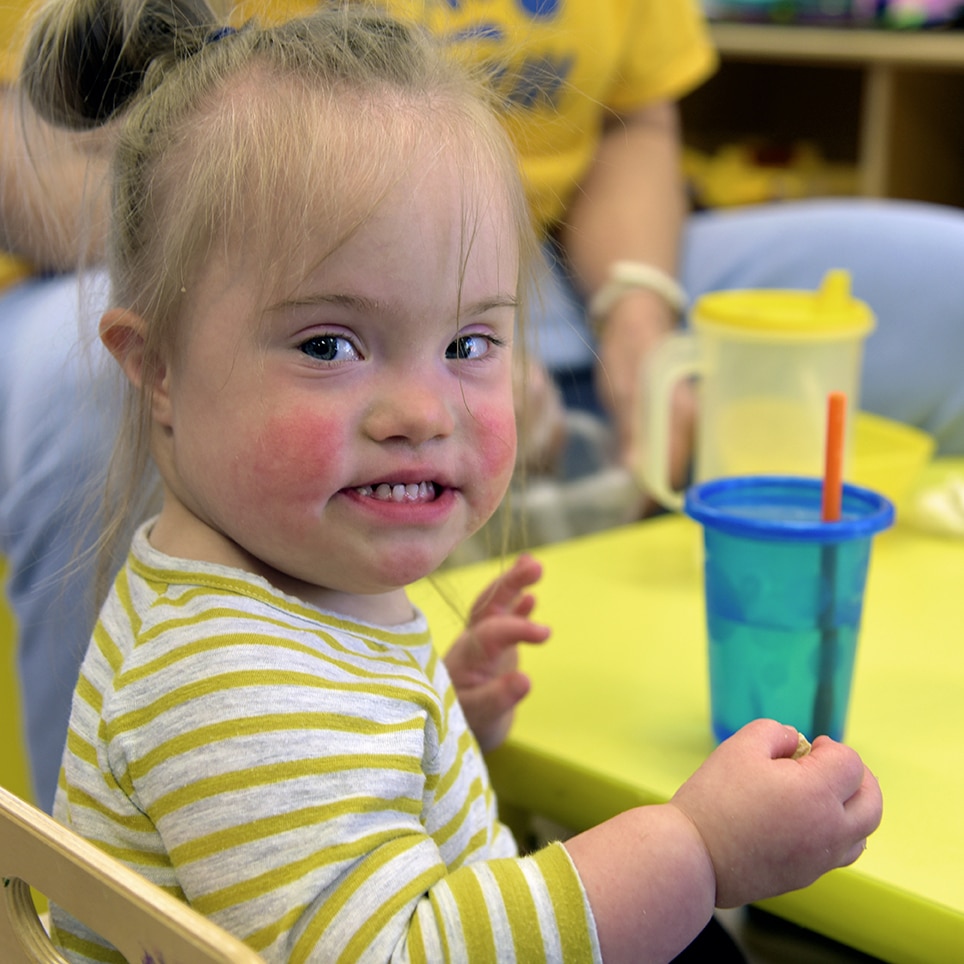A guide to help parents use snack time to facilitate their children’s language development.
Join in and eat – Meals and snacks are a wonderful time for social engagement with your child. We gather around food throughout our lives. We want this time to be positive and engaging for your child. No matter what you are eating/drinking, being a part of snack time helps to keep your child engaged.
Follow their lead – Notice what your child is interested in eating. Are they looking at the box of crackers you got out? Are they reaching for your apple slice? Are they trying to climb the counter for the cookie jar? It is good to have family limits when it comes to food types/amounts/locations for snacks. It is also nice to allow your child some choices (within your limits). Do they want Goldfish crackers or Ritz crackers? Strawberries or grapes? Cheese or yogurt? Providing some choices and letting your child make decisions about their food can help them stay engaged and communicate more during snack time.
Try something new – Once you have snack time going, you can always bring in a new food idea. You can eat a food that your child does not usually eat and see if they are interested in trying it also. You can introduce a dip to the snack to increase interest (e.g., ranch, ketchup, salsa, pudding, etc.).
Model language – Throughout snack time you can model language for your child. Food can be very motivating for some children. They might be willing to try to imitate a word or sign for food that they would not for something else.
- Variety of Words – You can use simple sound effects (e.g., mmm, yum-yum, ah, etc.), labels (names of the food/drinks), action words (e.g., eat, bite, pour, crunch), repetition/completion (e.g., more, all done) and descriptive words (e.g., soft, crunchy, sweet, sour, yummy, etc.).
- Expanding Language – When they say a word, repeat their word and add a few words. This can be especially helpful if your child is stuck on “more” as an overall requesting word. Expand that “more” to include the specific vocabulary (e.g., “More crackers.” “I want more apples.”).
Wait – Waiting is one of the most important things you can do to help your child with their language development. During snack time it can be easy to anticipate your child’s needs. Try to resist this temptation. Snack time can create opportunities for your child to communicate. Consider providing a small amount to start the snack (e.g., a few goldfish crackers, a quarter of a graham cracker). Once they finish this, they will hopefully want more. Your goal is for them to ask for more food on their own. While your child is learning how to request, you can provide levels of support. We want to use the least amount of support that we can. From the least to the most support, you can try:
- Expectant waiting (Expectantly looking at the child while waiting for a request)
- Open question (What do you want?)
- Choice question (Do you want peaches or raisins?)
- Direct request to imitate/say a word or sign (Tell me, “More.”)
- Hand over hand assistance to complete a gesture, sign, or picture exchange
Developed by Melissa Black, MA, CCC-SLP
